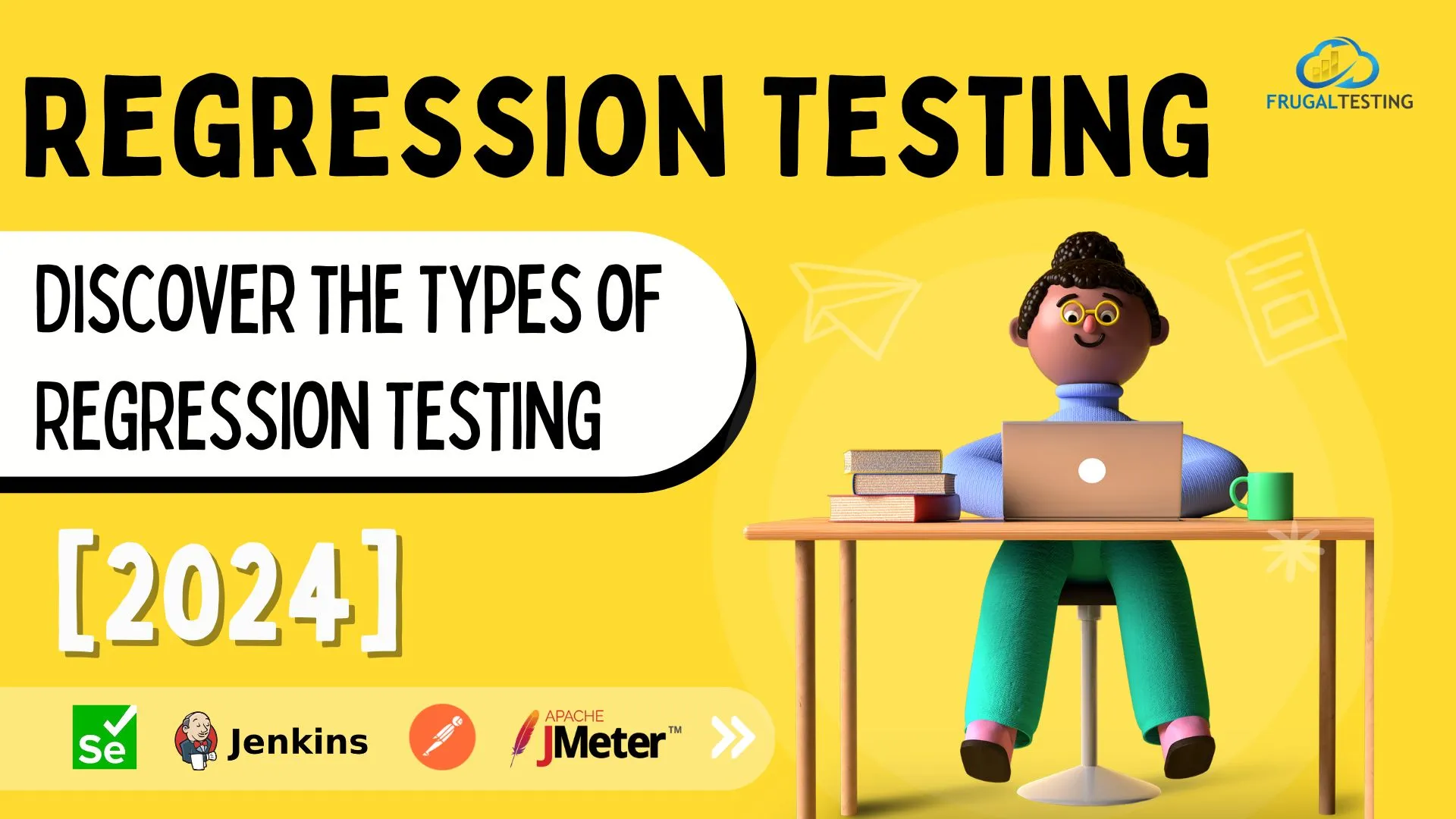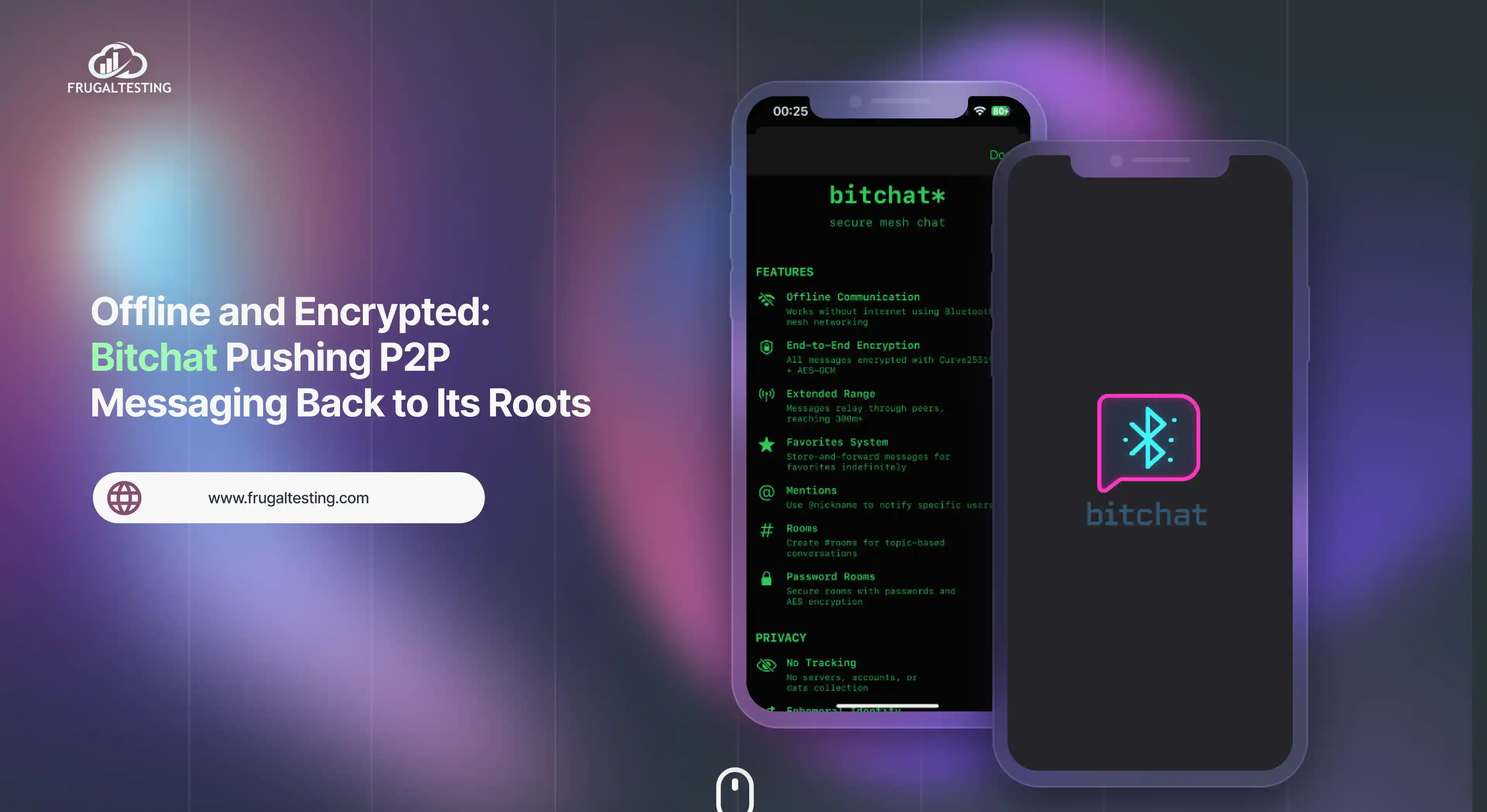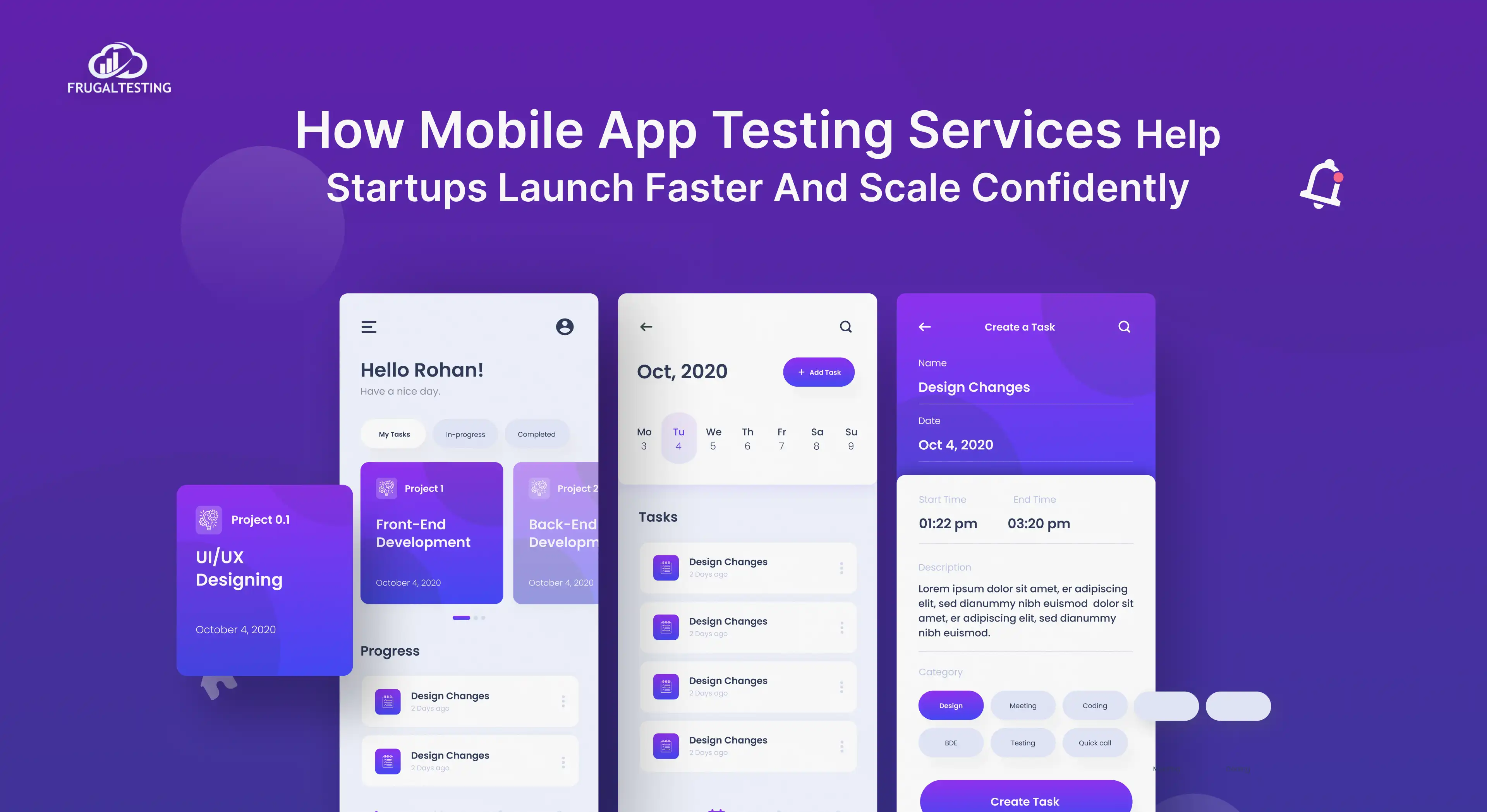Imagine going back in time to fix a bug you introduced with a future update. Regression test selection in 2024 is like a time machine for your software, preventing future headaches.
🚀 Regression testing ensures that software satisfies quality standards, boosting user happiness in 2024 when customer expectations grow entire development cycle.
🚀 Regression testing ensures the stability and reliability of software by ensuring that new code modifications are not interfering with existing functional tester.
🌟We'll keep things simple here so you can begin learning about the exciting concept of regression testing process.
🌟Do you want to know more features in regression testing? It's more than a trendy term.
🌟In 2024, we'll observe the most advanced and advantageous features of regression testing.
🌟Understand the importance, types, tools, and examples of regression testing and learn more.🌟Discover the top benefits of regression testing that you absolutely must recognize.
.webp)
What is Regression Testing?
Software testing known as regression testing takes place to make sure that a recent update or modification to the application hasn't negatively impacted its current functions. Regression testing ensures that developers don't break items that are currently working when they publish updates often.
Regression testing solves a problem that many developers experience: old bugs coming back when new modifications are made🧑💻.
.webp)
When to perform regression testing
.webp)
Code Commits:
Regression testing should be started following each code commit or merging to the version control system to ensure that no unexpected side effects or functions have been damaged.
Automated Builds:
Regression tests should be automatically launched upon every build as part of the continuous integration (CI) and continuous deployment (CD) pipelines to verify the integrity of the program following the integration of changes.
Release Candidates:
Regression testing should be done on the release candidate before a new version of the product functionality is released to make sure that all current features are operating as intended and that newly added features haven't caused the role of regression testing.
How to plan regression testing
.webp)
Regression testing that works depends on having a clear plan. The essential steps for organizing a successful regression test are written down in this order:
1. Scope and Objectives:
Clearly state which features, platforms, and modules will be subjected to regression testing.
Define the objectives of your testing, including backward compatibility preservation, regression detection, and application stability.
2. Test cases:
Determine and assemble an extensive collection of test cases that address every important feature of the system.
The user scenarios and specified criteria should serve as the foundation for these test cases.
3. Test Environment:
Establish the software and hardware setups needed to conduct the tests. This covers the operating system, database, and any other requirements, as well as the program version that is being tested.
4. Test Data:
Create a Wide range of test data covering different testing situations.
All test cases should use meaningful and consistent data.
5. Test Execution Strategy:
Create a schedule that includes deadlines, dependencies on other projects, and milestones for carrying out the regression tests.
Assign the required resources, including physical hardware, tools, and testers.
6. Defect Management: Create a procedure for documenting, monitoring, and handling errors that are found during testing.Procedures for determining severity levels and ranking defects should be part of this process
You may build an effective regression testing plan that ensures the dependability and quality of your software application throughout its development lifetime by according to these guidelines and best practices.
Types of Regression Testing
.webp)
1. Manual Regression Testing:
- The process of manual regression testing is carrying out test cases from the regression test suite by hand in order to verify that the software application's basic functionalities are correct. .
- Although this type of test takes a lot of time and is prone to human error, it helps testers find complex scenarios and visual flaws that could be difficult to automate.
2. Automated Regression Testing:
- Since automated tests may be run frequently, this strategy greatly saves execution time and boosts efficiency.
- It works well with repeatable test cases and stable functionality.
Let's discuss a few software regression testing techniques
.webp)
1. Corrective Regression Testing:
Category: Manual or automated.
🟡Purpose: To ensure that the bugs or defects in the code that have been corrected do not cause new problems or bring back issues that have already been fixed by the development tool.
🟡 Methodology: Testing team only the impacted sections of the code incompatibility and performance issues while concentrating on the particular patches used.
Example:
Scenario: Assume you are testing a fitness app that includes Modules A and B for tracking exercise and calories burned. These advanced core features have already undergone testing and been made product quality.
a. Users report an issue with Module B where the amount of calories consumed for specific items was not being accurately recorded.
b. Developers solve the potential issue in Module B.
Fix: Corrective regression testing helps verify the repair function without creating additional problems by retesting the specific functionality that had a flaw (Module B) and doing smoke tests on possibly impacted regions (Module A).
2. Progressive Regression Testing:
Category: Manual testing.
🟡Purpose: To confirm that any software development process made to the current features or functionalities have no negative impact on the stability of the system overall mode for testers.
🟡 Methodology: Testing every test in the suite to find any defect fixes brought on by the changes.
Example:
Scenario: Suppose you have a mobile application banking app that lets customers pay their bills, view their account balances, and transfer money. The development team makes the decision to include a new function that lets customers schedule automatic bill payments.
Fix: The QA team thoroughly checks the mobile banking app's current functionality to ensure quality after introducing the recurring payments option. They confirm that there are no problems blocking users from transferring money, checking account balances, and completing other duties. When verified, the desktop application is confidently launched because it is still stable and dependable for users.
3. Complete Regression Testing:
Category: Manual or automated.
🟡Purpose: Regression testing is performed to confirm the overall effect of large-scale code changes on the entire programming language.
🟡 Methodology: Entire development cycle of all stable features and functionalities to ensure the stability of the system by the automation team.
Example:
Scenario: The software development team is gearing up to launch a significant update for their e-commerce platform, prioritizing stability and aiming to avoid any executable specification setbacks.
Fix: automation tool implements new features, enhancements, and bug fixes and as well as Testers systematically execute test cases covering all aspects of the platform.
4. Partial Regression Testing:
Category: Manual or automated.
🟡 Purpose: To simply test the software application's essential features or those parts that are impacted by code changes.
🟡 Methodology: Testing only the functionalities or features that are affected, leaving the unaffected areas of the program alone.
Example:
Scenario: Let's take an example's e-commerce website. Imagine a tiny code modification this time that aims to speed up the product listing page's entire product image loading.
Fix: The e-commerce website may effectively guarantee that the image loading enhancements work as expected without rerunning all regression tests by utilizing partial regression testing, which will save time and resources.
5. Visual Regression Testing:
Category: Automated.
🟡 Purpose: To verify the application's visual elements and make sure that any UI modifications don't result in any frequent defects.
🟡 Methodology: Automated testing that compares application screenshots taken before and after upgrades using visual regression testing tools.
Example:
Scenario: Assume you work on a development team that is in charge of updating the website of a company. The website has a homepage with several components like a header, navigation menu, banner ads, and text content.
Fix: Through visual regression testing, it is possible to make sure that the homepage's design modifications are applied correctly and do not unintentionally generate visual regressions that could
negatively affect user experience or brand consistency.
6. Regional Regression Testing:
Category:(Subset geographic compatibility testing).
🟡 Purpose: Functional performance on particular areas or settings where the software program is being utilized, making sure it works properly under different geographic conditions.
🟡 Methodology: To find any impact list unique to a particular location, test the application in a variety of location scenarios.
Example:
Scenario: A social media platform adds a feature for creating polls. But, during regional testing, some users in specific areas can't access it.
Fix: Production team discovers a language setting issue causing the problem. They tweak the code to work with all languages. Now, users everywhere can create polls without any trouble.
To ensure the stability and quality of their frameworks, software development teams can properly plan and carry out regression testing cycles by understanding the various types of regression testing and their goals.
Regression testing tools that you can look into are: View our top pick

You may look into the following popular tools for regression testing:
🟡Selenium: With the help of the open-source code Selenium framework, you can automate browser interactions on many platforms and browser versions.
🟡 Jenkins: Regression test suite scheduling and execution can also be done with it.
🟡Apache JMeter: JMeter is typically used for performance testing, however by creating a large load time and checking server performance in various scenarios, it may also be used for regression testing of web applications.
🟡Postman: Regression testing of APIs can be done with Postman, an API testing tool open-source library.
🟡SoapUI: Another open source tool for testing APIs that supports RESTful and SOAP web services is called SoapUI. Functional testing, security testing, and performance testing are just a few of the tools it offers for regression testing APIs.
🟡Tricentis Tosca: Among other testing tasks, automated regression testing is supported by Tricentis Tosca, an enterprise-level software testing solution.
There are numerous tools for regression testing; these are just a handful of them. What you need and want will decide which tool is ideal for you.
What makes retesting and regression testing different from one another
🧪Challenges in regression testing and retesting are essential for software quality, they have different functions here we see how retesting and regression testing different from one another :
Retesting:
- Focus: Confirms that a certain bug fix has been successfully handled.
- Scope: Restricted to the precise test cases that the identified bug caused to fail in the past carried out when a bug fix is applied.
- Timing: Performed after a bug fix is implemented.
- Objective: Verifies that the functionality functions as planned and that the update fixes the initial problem.
- Analogy: Visualize a mechanic fixing a particular component of your vehicle.
Regression Testing:
- Focus: Verifies that no unexpected modifications to the code have affected the functionality of the current version (including bug fixes, new features, etc.).
- Scope: Higher, featuring a collection of test cases designed to cover the software's essential features.
- Timing: Performed following the addition of any new code, not simply bug areas.
- Objective: Finds any new problems brought up by the code changes or regressions, which are the complications of the old entire test suite.
- Analogy: Regression testing can be compared to thoroughly checking your complete car after repairs or changes to make sure nothing else was impacted and everything continues to function as it should.
Here's a table summarizing the key differences:
Now let's talk about retesting and regression testing examples which are adding value in the regression test cycle.
Example of retesting and regression testing:
Although they are frequently misunderstood, regression testing and retesting are two separate types of software testing 📱.
Retesting involves performing previously completed tests again to make sure that errors have been addressed and that the program is operating as expected following a series of tests.
For example, shopping apps where users can't add items to their cart using the "Quick Add" button. You report this bug, and the developers fix it. Retesting involves you specifically checking the "Quick Add" functionality again to confirm it works as expected.
On the other hand, complete regression testing is done to confirm that modifications made to the software program haven't resulted in the introduction of new flaws or an issue of already-existing functionality frequent modification.
Regression testing and retesting are both essential to maintaining the security and quality of software applications.
What are the benefits of software testing: Regression Testing
.webp)
Software is tested using regression testing to make sure that recent modifications haven't undermined earlier installed features.
Here are a few typical situations when regression testing is necessary.
🟢New feature or functionality: Regression testing is essential to ensure that new features don't interfere with already-existing functionalities in unit tests.
🟢Defect fixes: Regression testing is used to confirm problem fixes and look for unexpected consequences in other advantages of regression testing.
🟢Code changes: Even little changes to the code may have an effect on other parts. Regression analysis helps in identifying these unit regression testing.
🟢Configuration changes: Unplanned side effects can also be created by modifying the configuration of a desktop application.
Best Practices for Regression Testing
.webp)
🟢Understand Scope
Changes occur in the scope, time frames, platform maximum test coverage, and objectives of various testing techniques.
🟢Clarify Requirements
Defining what matters to you, the entire product team, your clients, and other stakeholders is crucial to developing an effective regression testing suite.
Questions you should ask yourself include:
- Frequency of running the regression testing suite.
- How to define major changes.
- Deadlines for reaching full regression maximum coverage.
🟢Automate the Right Tests
Types of tests that are challenging to grow or execute may compromise the testing cycle, thus being included in the regression suite needs to be carefully considered
Top regression testing practices you can implement in 2024.
%2520(1).webp)
Here are some of the best practices for regression testing in 2024 that you may use. Regression testing is still a key component of the software development lifecycle.
🟡Selecting Strategic Tests:
Choosing priorities: Not every test is made equal. Give top priority to areas at high risk or essential functions that may be affected by recent changes.
🟡The Key is Automation
Execute Repetitive Tests: Utilizing regression testing frameworks such as Selenium or Cypress, determine whether manual and repetitive tests can be automated.
🟡Network Integration for Continuous Integration and Delivery (CI/CD):
Regression Test Integrity: Make sure your CI/CD process includes your regression tests.
🟡Collaboration Is Necessary:
QA in Code Reviews: Involve QA testers into code updates reviews to find possible regression problems prior to merging the code. This preemptive strategy can help you save execution time and energy.
🟡Maintaining and Improving the Test Suite:
Regular Updates: The program's features change over time. Maintain the relevance of your regression test suite by updating it on a regular basis to account for these modifications.
What is the significance of regression test cases?
.webp)
They serve as a safeguard during the development process, making sure that modifications to the code don't mistakenly destroy already-existing functionality.
Here is an overview of their importance:
Preserves Current Functionality: Updates to features or bug report occasionally have unexpected effects.
Release Confidence: Developers and testers can feel confident that new releases are reliable and don't regress on previous functionalities when they have a well-run regression test suite.
Early Bug Detection: Future Regression cycles makes it possible to find issues early in the process of development.
Agile Development: Agile environment rapid updates and iterations are the standard in Agile sprint approaches, regression testing is especially crucial.
Regression test cases serve as a safety net, guaranteeing that an application's fundamental features hold steady during development.
Exploring a Top Regression Test Case Example: Are You Familiar?
The ideal scenario is contingent upon the particular software under review and the essential features. Perhaps we can give you a decent illustration of a regression test case:
Imagine for a moment an online store.
Tested functionality: Adding an item in the shopping basket steps:
- Visitor looks at a product page.
- The product's quantity is chosen by the user.
- User selects "Add to Cart" from the menu.
- The product's addition to the cart is verified by the system.
- The system shows the revised cart total.
Estimated outcome: After adding the item to the cart, the price of the quantity of the item that was chosen is shown in the cart total.
Final thoughts
That wraps our in-depth analysis of Regression testing!
Similar to a software testing activity health check-up, this testing makes sure everything functions properly and keeps issues at bay. Regression testing approach involves everything, from verifying the accuracy of the images to testing new functionality. It's more crucial than ever to maintain your software updated and bug-free in today's rapidly evolving computer environment.
Regression testing is a useful addition to any routine, whether you're writing, testing, or project managing the code.
So let's maintain the highest quality of software and keep our users with the functionality of our website's apps unexpected behavior.
People Also Ask
1. What is regression analysis testing?
- Regression analysis testing is a software testing technique that verifies if recent code changes or modifications have negatively impacted the existing functionality of a software application.
2.What is the principle of regression testing?
- The principle of regression testing is to ensure that any changes or updates introduced to a software application do not break or impact the existing functionality.





%201.webp)

